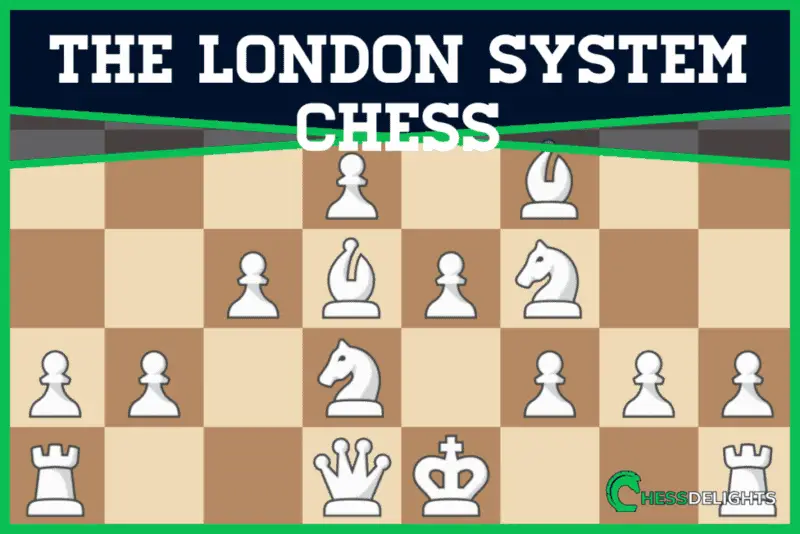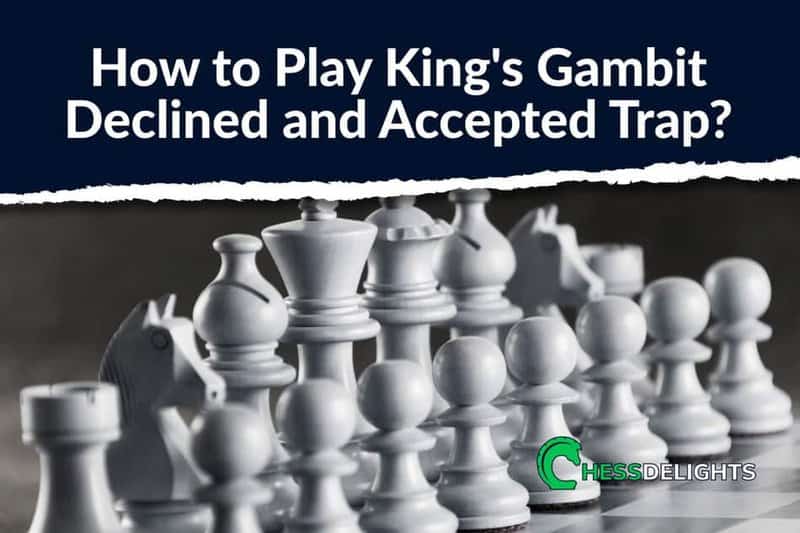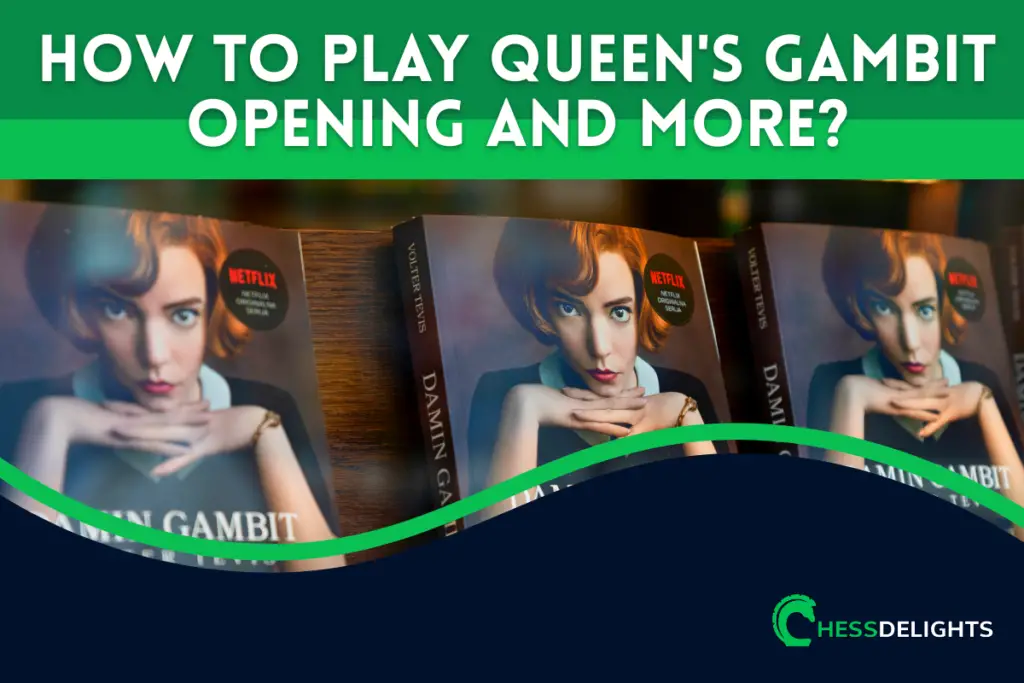When I was studying chess a very very very long time ago, I am used to hearing two or three named chess openings… 🙂 Queen's Gambit, Ruy Lopez, and Sicilian Defense.
What I didn't know is that there are many other chess openings that I didn't know existed. I did a little research and found out that the Encyclopedia of Chess Openings (ECO) organized code for the list of chess openings.
You can check out the list of chess openings according to ECO here. Learning all of it will take time obviously, so since I am also teaching my daughter the importance of chess openings, I decided to learn and list five popular chess openings that chess beginners should know.
Table of Contents
Why do we need to learn chess openings?
The opening is one of the most important stages of every chess game. How you play your first few moves can greatly affect the rest of the game. If you play the opening well, you will gain a significant advantage. However, if you play it poorly, you may find yourself struggling to defend your King throughout the game.
Chess offers countless possibilities right from the start.
So, how many chess openings are there? According to sources like Wikipedia and the Encyclopedia of Chess Openings (ECO), there are at least 500 chess openings. These openings have been derived from hundreds of thousands of games played by masters and grandmasters.
The ECO carefully selects the chess openings that are most commonly used at the master or grandmaster level.
If you want to explore the list of chess openings, you can check out the full article on Wikipedia. Keep in mind that this list does not include several chess combinations that can occur right from the first move.
Recommended Reading: If you want to learn more about how many openings you need to learn, read this article.
How many possible chess combinations are there in the first move?
Once your pieces are set up, you will have a choice of 20 different moves to start with as White. After White makes a move, Black also has 20 possible opening moves.
This means that there are already 400 possible combinations right from the first move! It's amazing to consider how many possible chess openings exist, especially since openings usually last for around 12 moves.
The good news is that we don’t have to guess which of the countless combinations will lead us to victory.
Rules of thumb in chess opening
Instead of just making random moves and hoping for the best, we now have some guidelines to follow.
Here are some important rules of thumb for a good opening:
- Control the Center: Try to take control of the middle squares of the board.
- Bring Out Your Minor Pieces: Move your knights and bishops out early.
- Make Active Moves: Always try to make moves that help you and put pressure on your opponent.
- Don’t Bring Out Your Queen Too Early: Wait before moving your queen since it is your most powerful piece.
- Protect Your King: Make sure your king is safe, especially by castling when you can.
If you follow these rules, you will have a strong opening every time!
Memorize these chess openings
If you want to get better at chess openings, it's helpful to learn and remember some of the best openings. These openings are used by players of all levels.
People often say that you should play the opening like a book. This means you need to memorize the exact moves that can give you the best advantage. Today, we will look at five important openings for beginners in chess. We will discuss the basic ideas behind these openings and some popular variations.
When you understand the ideas behind an opening, you’ll be ready to use it to win against your opponents in every game you play.
So, let’s get started!
1. The Ruy Lopez or Spanish Game Opening (1. e4, e5 2. Nf3, Nc6, 3. Bb5…)
The Ruy Lopez is one of the most popular chess openings. Every chess player, from beginners to professionals, should learn and practice this opening.
The Ruy Lopez is fun to play and offers many chances for exciting tactics. While it may not be the flashiest opening, it is great for beginners because it is simple and follows important rules of chess.
Learning this opening helps you understand what the early game is like.
How the Ruy Lopez Opening Works
- First Move: White starts with 1. e4. This move helps White control the center by placing a pawn there. Black responds with 1… e5, matching White's effort to control the center.
- Second Move: White plays 2. Nf3. This move is important for three reasons:
- It develops a knight.
- It helps control the center.
- It puts pressure on Black’s pawn on e5.
If Black does not protect this pawn, White can capture it and gain an advantage.
- Defending the Pawn: Black has several ways to defend the pawn, but the most popular and effective move is 2… Nc6. This move not only protects the pawn but also develops a knight and helps control the center.
Remember, even when defending, try to make active moves!
- Third Move: White plays 3. Bb5, which is the main move in the Ruy Lopez. This move develops a piece and asks Black some tough questions.
Black must decide how to deal with the threat of White’s bishop capturing the knight on c6, which would let White take the pawn on e5.
Black’s Responses:
From here, Black has several good options:
- The main line: 3… a6
- The Berlin Defense: 3… Nf6
- The Steinitz Defense: 3… d6
Each choice leads to a different game.
The Main Idea:
The main theme of the Ruy Lopez is a battle for the center of the board. White tries to create an active center while Black works hard to counter this effort.
By learning and practicing the Ruy Lopez, you will improve your chess skills and enjoy the game even more.
2. The Queen's Gambit Opening (1. d4, d5 2. c4…)
If you don't like fast and tricky chess games, the Queen's Gambit might be better for you. The Queen's Gambit often leads to calmer games that focus more on strategy and positioning your pieces rather than direct attacks.
How the Queen's Gambit Opening Works
- First Move: The game starts with 1. d4. This move is more about strategy compared to 1. e4, which is more tactical.
- Black's Response: Black responds with 1… d5. Just like in the Spanish opening, black wants to challenge white's control of the center right away.
- White’s Gambit: Then, white plays 2. c4. This move makes sense because white is trying to control the center again.
You might wonder why white is giving up a pawn. Can’t black just take it with 2… dxc4 and be ahead by a pawn?
Why Black Shouldn't Take the Pawn
The pawn isn't really free! If black takes the pawn, it can lead to problems. After white plays 3. e3, black will struggle to keep the extra pawn without losing too much.
For example:
- If black plays 3… b5, then white can play 4. a4.
- After that, if black plays 4… c6, white can respond with 5. axb5.
- Then after 5… cxb5, white plays 6. Qf3, and suddenly black cannot defend the rook on a8 properly.
Because of this, most players choose not to take the pawn. Instead, they might play moves like the Queen's Gambit Declined (2… e6) or the Slav Defense (2… c6).
Both of these moves lead to more strategic games. The main idea in these openings is to move your pieces around and get them into the best spots before you make your move against your opponent.
3. The Sicilian Defense (1. e4, c5)
When you play chess with the black pieces, things are a bit different. Right from the start, you have a slight disadvantage because white always moves first. White tries to take advantage of this extra move, while black's goal is to neutralize that advantage.
However, black shouldn't just play defensively. One of the best openings for black is called the Sicilian Defense. This opening allows black to fight back against white's moves.
If you like exciting games, the Sicilian Defense is a great choice for you. It’s one of the sharpest openings in chess, full of tactics and quick moves. Games that start with this opening often turn into races to see who can checkmate the other player first.
How the Sicilian Defense Works
When white plays 1. e4, many players expect black to respond with 1… e5. But instead, black can change things up by playing 1… c5. This move is smart because it puts pressure on the center of the board without moving a center pawn right away. Black wants to keep those center pawns safe until they can be used effectively.
The game usually continues like this:
- e4 c5
- Nf3 d6
- d4 cxd4
- Nxd4
This setup is known as the Open Sicilian. Here, white gives up a center pawn to get their pieces out quickly, while black tries to take advantage of the fact that white has only one center pawn left.
The Sicilian Defense can be very intense. Often, white will castle kingside, and black will castle queenside. This means both players can push their pawns toward each other's kings to attack.
Be Ready for Action
Playing the Sicilian Defense means you have to stay alert. One mistake can trap your king! But if you enjoy thrilling games and want to shake things up on the board, the Sicilian Defense is perfect for you.
4. The Indian Defense (1. d4, Nc6)
In chess, a common tip is to move your pawns to the center to control the board. However, many players today are choosing Indian Defenses instead.
What are Indian Defenses?
The Indian Defenses focus on not directly fighting for the center. Instead, the black player (the one playing second) uses their pieces to weaken white's (the first player) center pawns.
Opening Moves
Instead of responding to white's first move of 1. d4 with 1…d5, black plays 1…Nc6. From here, the game can go in many directions.
Here are some popular Indian Defense openings:
- Nimzo-Indian: 1. d4 Nf6 2. c4 e6 3. Nc3 Bb4
- Queen's Indian: 1. d4 Nf6 2. c4 e6 3. Nf3 b6
- King's Indian: 1. d4 Nf6 2. c4 g6 3. Nc3 Bg7
The main idea of Indian Defenses is to let white control the center while black builds a strong position at home.
Strategy Behind Indian Defenses
Black counts on white's expansion into the center creating weaknesses that can be taken advantage of later. This leads to a very strategic and careful game.
As black, you might notice that you have less space than white. But if you are good at positioning your pieces correctly, Indian Defense can be a powerful strategy for you.
Caution for Beginners
Be careful when using Indian Defenses. They may not be the best choice for beginners because they go against some basic chess rules.
If you're new to chess and unsure what to do, it’s better to play the Queen's Gambit Declined when your opponent opens with 1. d4. This is a safer option for learning and improving your skills.
5. The French Defense (1. e4, e6)
The French Defense is a way for Black to try to equalize the game against White's early advantage.
We have already looked at how Black can do this with fire (like in the Sicilian Defense) and with patience (like in the Indian Defense). Now, let’s see how Black can “choke” the game.
What is the French Defense?
The main idea of the French Defense is to create a locked position on the chessboard.
Black wants to set up a closed game where their pawns face White's pawns, and their pieces are placed behind them.
When White plays e4, Black responds with e6. This move encourages White to take control of the center by pushing d4, which they usually do. Then Black plays d5.
By playing d5, Black offers to exchange pawns, but White usually does not take this exchange.
Why Doesn’t White Accept the Exchange?
If White takes the exchange, it can lead to boring games without any clear advantage for either side. Instead, White has other options like:
- Advance French: 3. e5
- Winawer: 3. Nc3
- Tarrasch: 3. Nd2
After this point, the game can go in many different directions. However, in most French Defense games, White will push their pawn to e5, creating the well-known French pawn structure.
The Importance of the French Pawn Structure
Once this pawn structure is set up, it plays a big role throughout the game. It completely locks up the center of the board, which forces both players to find clever ways to attack from the sides.
The French Defense will test how well you can play with limited space. Once the pawn structure is in place, the game becomes a strategic battle. The player who can move their pieces to the right spots at the right times will likely win the game.
Wrapping Up
Here are five important chess openings that you will likely see when playing. It's essential to understand the ideas behind these openings.
Learning these five openings can give you a great starting point as you improve at chess.
I hope this article has taught you something new or helped you show your kids why learning chess openings is important.
By starting with some of the best chess openings mentioned here, you can build a strong foundation for your chess skills.







